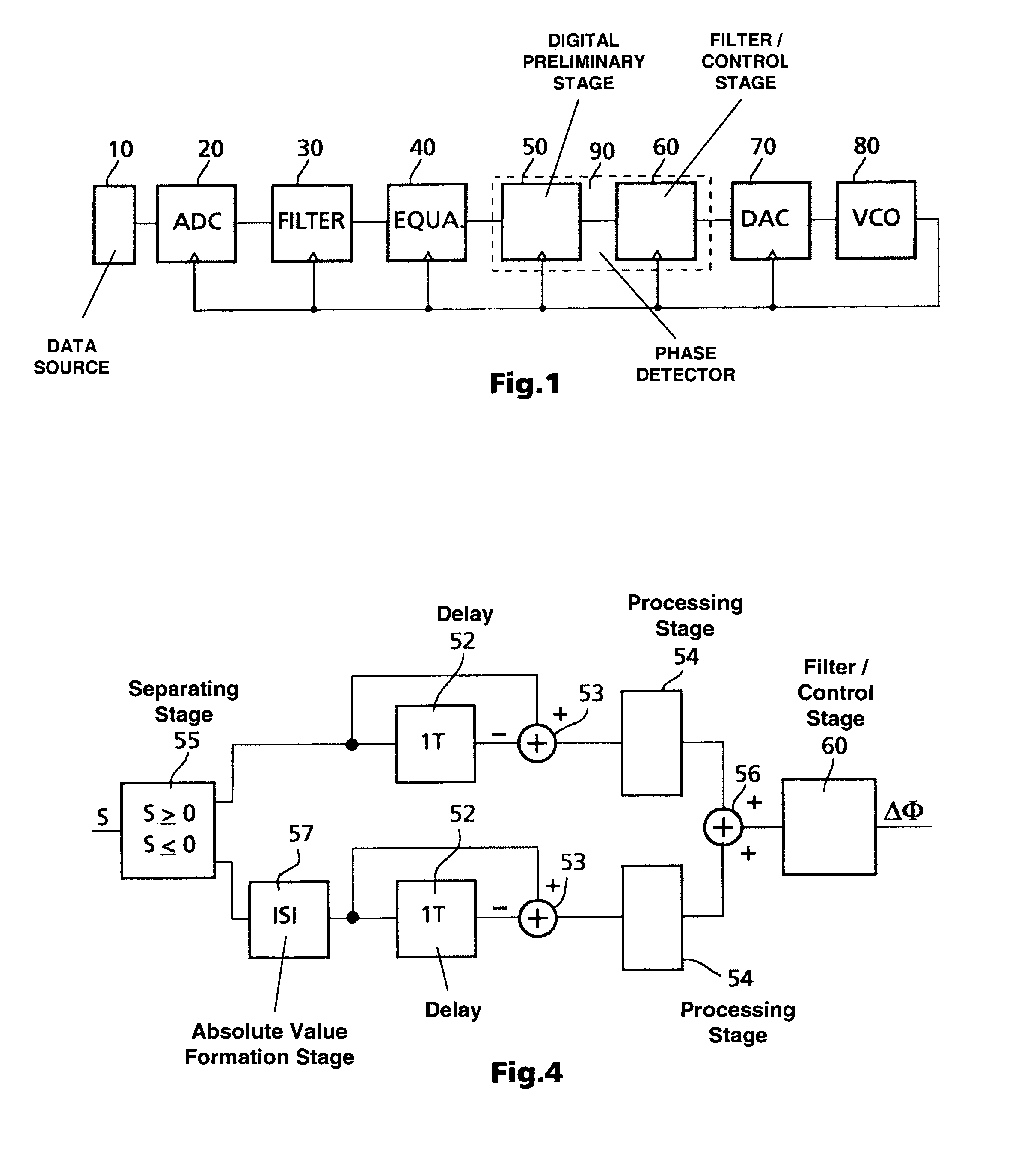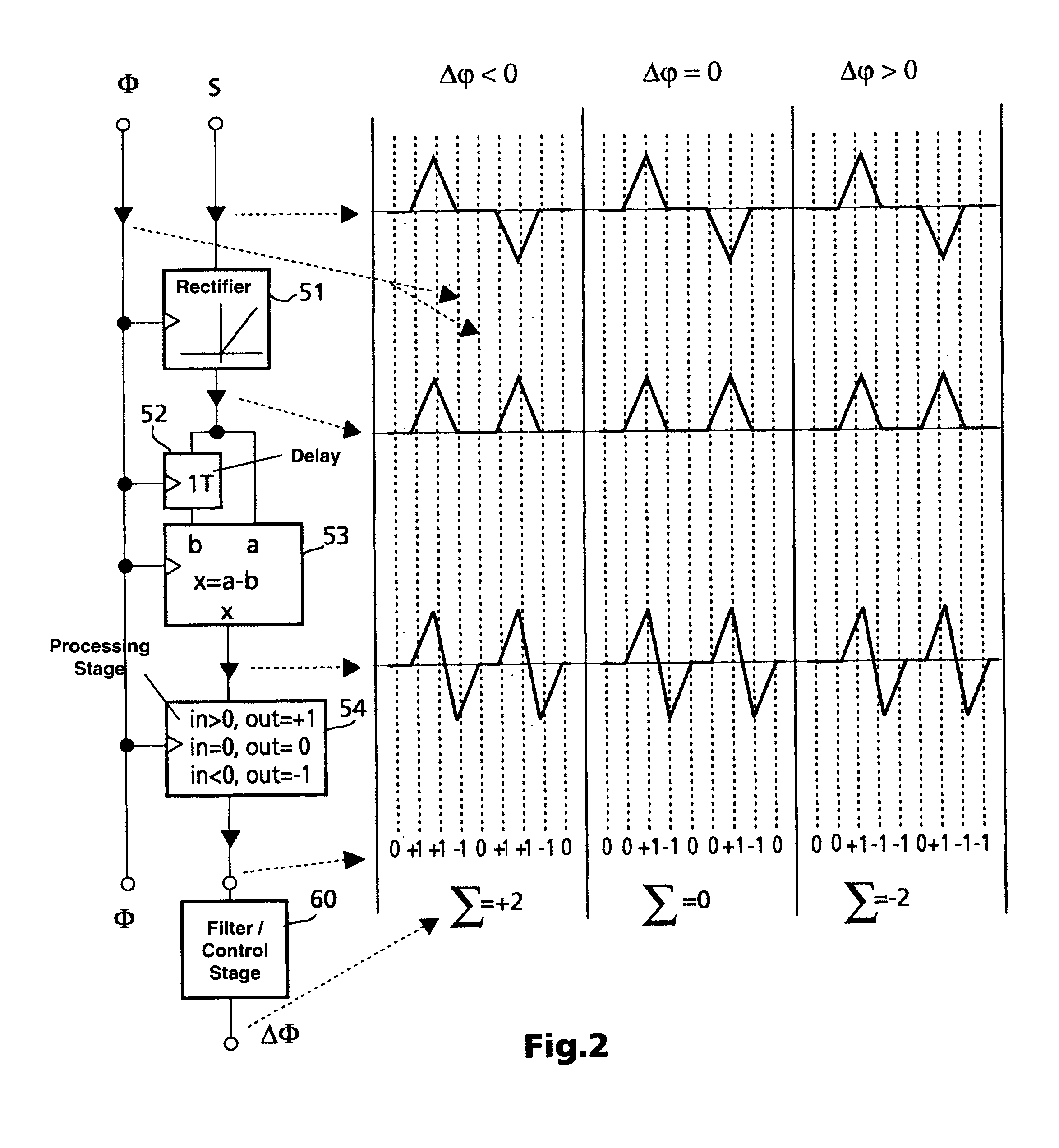Phase detector for a phase-locked loop
a phase detector and phase-locked loop technology, applied in the field of phase detectors for phase-locked loops, can solve the problems of phase control corruption, phase-locked loop production in digital form, and emc radiation is more readily possible with such components,
- Summary
- Abstract
- Description
- Claims
- Application Information
AI Technical Summary
Benefits of technology
Problems solved by technology
Method used
Image
Examples
Embodiment Construction
[0023]The phase detector according to the invention is intended to be used in a digital implementation of a phase-locked loop. Such PLL circuits can be used in diverse areas where, for example, the data digitally recorded on a storage medium needs to be recovered or else where a transmitted data stream is received whose data likewise needs to be recovered. The recorded or transmitted data signals are very frequently self-clocking, i.e. they are coded such that enough edges arise in the data signal for it to be possible to use conventional PLL circuits to recover the data clock signal reliably. The invention is therefore also explained in more detail below using the example of this important application instance.
[0024]In FIG. 1, the reference numeral 10 denotes a data source. Known data recording units are, by way of example, digital video recorders based on the D-VHS standard, DVC units, DVD units, CD units, MD units etc. Examples of units which receive digitally transmitted data ar...
PUM
| Property | Measurement | Unit |
|---|---|---|
| temperature | aaaaa | aaaaa |
| phase | aaaaa | aaaaa |
| clock frequency | aaaaa | aaaaa |
Abstract
Description
Claims
Application Information
 Login to View More
Login to View More - R&D
- Intellectual Property
- Life Sciences
- Materials
- Tech Scout
- Unparalleled Data Quality
- Higher Quality Content
- 60% Fewer Hallucinations
Browse by: Latest US Patents, China's latest patents, Technical Efficacy Thesaurus, Application Domain, Technology Topic, Popular Technical Reports.
© 2025 PatSnap. All rights reserved.Legal|Privacy policy|Modern Slavery Act Transparency Statement|Sitemap|About US| Contact US: help@patsnap.com



